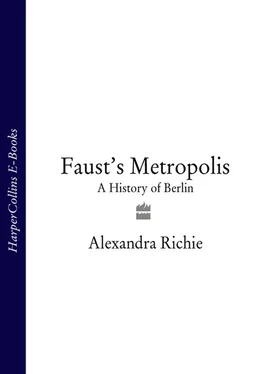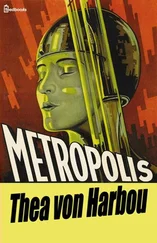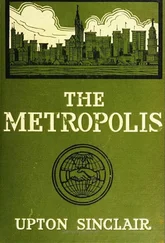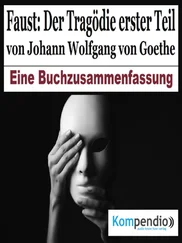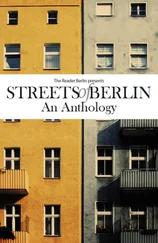The misery of the century was not yet over. In 1376 Berlin was ravaged by another of those demons of medieval Europe – fire. It struck again in 1380 in the ‘Great Fire’, which destroyed most of the city. All the churches were levelled and the Rathaus was reduced to ashes along with all early documents and records of the city’s history, one of the reasons we know so little about Berlin’s earliest years. A contemporary chronicler reported that only six buildings were left standing, and when it was all over an unfortunate and probably blameless knight, Erich von Falke, was accused of arson and tortured to death; his head was stuck high on the Oderberg Gate.
The era was for many Berliners a miserable time of superstition and punishment. The city enforced strict penalties for the most petty crimes and, according to the Berliner Stadtbuch , women caught stealing from the Church were buried alive while those caught committing adultery were killed by the sword. Crimes like alleged poisoning, witchcraft and the use of black magic were considered serious offences and between the years 1391 and 1448, in a population of no more than 8,000 people, 121 ‘criminals’ were imprisoned, forty-six were hanged, twenty were burned at the stake, twenty-two were beheaded, eleven were broken on the wheel, seventeen were buried alive (of which nine were women), and thirteen died through other forms of torture. 77Being broken on the wheel meant just that: the victim was tied on the ground and large wooden blocks placed under him. He was then battered until his arms, legs and spine were cracked so that his broken body could be threaded on to the spokes of a specially made wheel, which was then raised on a high post and the man left to die (the wheel was not used to punish women, who were typically drowned or boiled, burned or buried alive). The corpses of the executed were hoisted up and displayed on the Lange Brücke, their bodies left to decay and their bones put out to rattle in the wind as a warning to others. 78Many other punishments are recorded on the bloody pages of the Berliner Stadtbuch – Christians who ‘mixed poison’ were burned, liars were boiled alive in a gigantic iron cauldron, and lesser charges could result in anything from having the eyes pushed out, the ears sliced through, the right hand chopped off, the tongue removed with pliers, or molten iron pushed between the teeth. 79These ‘minor’ sentences were carried out twice a week, on Mondays and Saturdays, although the public executions took place only once every two weeks – on every second Wednesday – in front of the Oderberg Gate. Such tortures were common throughout Europe but Berlin was already proving itself to be rather a violent place.
Things were to get worse. The fire which had resulted in the execution of Erich von Falke had been so destructive that Margrave Sigismund had allowed Berlin to forgo paying taxes for a year, but even so it was dangerously weak, and from the 1390s the infamous Raub Ritter – the Robber Barons from Mecklenburg and Pomerania – began to ravage the area. The very mention of their names – Quitzow, Putlitz, Bredow, Kracht – was enough to send fear through the population. These destructive, barbaric men brought catastrophe in their wake and made the decade from 1401–10 the most turbulent in the history of medieval Berlin.
The robber barons were adventurers who terrorized the area, burning and looting and raping at will. An extraordinary letter sent to the people of Lichtenberg still survives in which Dietrich von Quitzow explains that ‘if they do not send their wagons to Bötzow and bring me wood and ten Schock [a group of sixty] of good Bohemian Groschen for delivery which your Councillors of Berlin-Köpenick have captured from me, I will take everything that you possess. Thereupon I await your answer.’ Towns like Berlin, Rathenow, Spandau, Bernau, Frankfurt, Beelitz and Potsdam desperately joined together in an attempt to defend themselves, but without money or arms there was little they could do. A contemporary woodcut entitled The Storming of a Fortress by the Robber Barons shows their technique for taking heavily fortified towns: in this case some hide behind baskets filled with stones, some run forward with ladders while some stand poised to skewer the defenders of the city gate with their long pikes. 80Some documents hint at the decimation caused by the bands: in 1402 the leaders of Berlin-Cölln complained to Margrave Jobst that the Count von Lindow and the Quitzows had ‘burned and destroyed 22 villages in a week’ and that they were still plundering and burning ‘day and night’ in Barnim. In the nineteenth century the robber barons were turned into Romantic figures, and the 1888 four-act play Die Quitzows by Ernst von Wildenbruch became one of the greatest ever triumphs at the Berlin Opera House. In reality, however, the fierce bandits brought nothing but misery to the beleaguered residents of Berlin.
The fight over the succession of the Mark Brandenburg led to years of chaos during which Berlin fell into serious decline. The Four Horsemen of the Apocalypse – famine, war, plague and omnipresent death – became the dominant symbol of the age and the once prosperous countryside, which had been dotted with little towns and villages, declined to almost nothing. The people of the region now believed that St John’s visionary prophecies were coming true and that the world was doomed, and the horrific paintings and woodcuts of the period, like the terrifying Dance of Death frieze in the Berlin Marienkirche, reveal the obsession with violence and decay. 81It was in part because of this unending chaos that on 8 July 1411 the Holy Roman Emperor Sigismund decided to give the troublesome land to a new leader, the descendant of the wealthy burgrave of Nuremberg. It was he who would set Berlin on the road from backward medieval trading town to one of the most important cities in Europe. His name was Frederick von Hohenzollern, and his family would rule over Berlin for over 500 years.
The first task of the Hohenzollern princes was to fight the robber barons and restore law and order to the Mark. In 1411 Burgrave Frederick VI attacked the Quitzows using the new invention of gunpowder-fired cannon and, after a series of spectacular victories, defeated the robber barons and arrived in Berlin in triumph. On 18 October 1415 the entire city, including noble and patrician families, all guild members and all residents, gathered to watch as the new leader was formally sworn in as the margrave of Brandenburg. In the beginning the Hohenzollerns were not particularly interested in Berlin, and the old patrician families managed to retain their control of the city councils, trade levies and taxes. The population grew increasingly impatient with them but could do nothing without the support of the ruler. It was about to change. In 1440 the Hohenzollern Margrave Frederick II, known as ‘Irontooth’, became Kurfürst or elector, and guild members and craftsmen invited him to take over the reins of government, even offering him the keys to the city. ‘Irontooth’ was happy to seize power, but the townpeople’s hopes of freedom were soon dashed. During his investiture he refused to confirm the privileges of the people (in fact he made the promise but refused to give the traditional vow to the saints, making it null and void in his eyes), and in 1441 he began to disband all governing bodies, including the courts and the town council. As promised he broke the control of the patrician families but, to the horror of ordinary Berliners, he also created an independent administrative network under his own personal control which effectively ended traditional citizens’ rights. The new power was to be symbolized by a new palace, the Schloss Zwingburg, for which he personally laid the foundation stone in 1443. Berliners were enraged and in 1447 they fought back, attacking Irontooth’s appointees, re-opening the old town hall and even flooding part of the city in an attempt to destroy the foundations of his new palace. Irontooth responded by rounding up 500 knights, crushing the revolt and throwing the statue of Roland – a traditional symbol of town rights – into the Spree. He then subjected the city to total control, appointing aldermen, seizing private property and levying his own taxes. It spelled the end of Berliners’ political independence. Berlin became the official residence of the Hohenzollern of Brandenburg-Prussia in 1486. 82
Читать дальше
